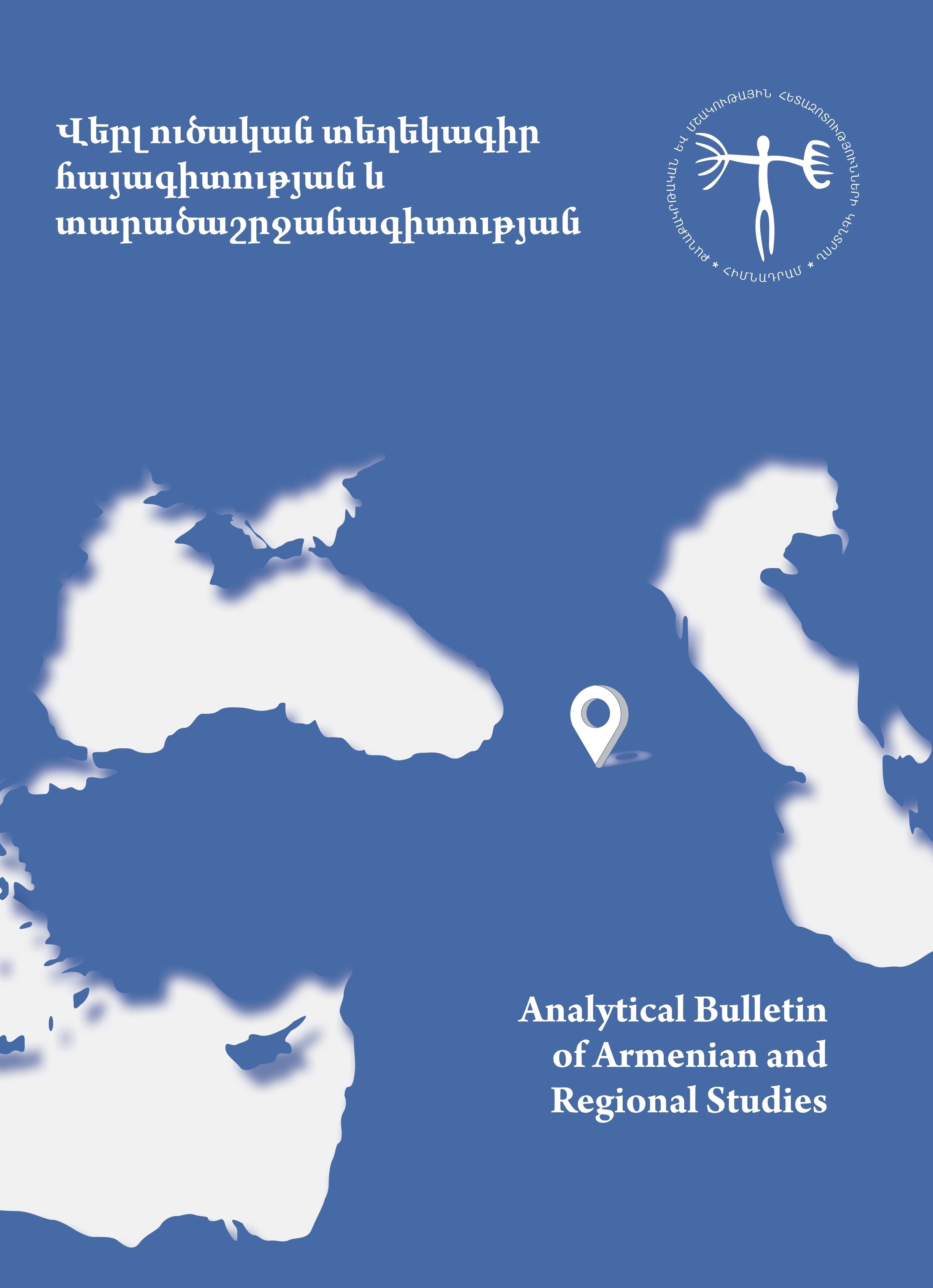Re-Examining Evil
The State of the Next Generations of the Armenian Genocide Survivors
DOI:
https://doi.org/10.56673/18294502-24.18-66Keywords:
Evil, Armenian Genocide, Crime, Sin, Conscience, Historical traumaAbstract
Where man-made reprehensible deeds are concerned, the term evil seems too outdated and pathetic for scholarly circulation nowadays. The article explores evil not abstractly but by penetrating three fields: jurisprudence, religion, and art. Through the ideas of “crime”, “sin”, and “myth,” it penetrates the legal, moral, and artistic domains. With the Armenian Genocide of 1915 in mind, the research project examines the possibility of 1) legal redemption for irreversible loss and damage, 2) historicization of sin, and 3) historical trauma. Thus, an attempt is made to “diagnose” the state of the next generations of Genocide survivors. The study emphasizes that despite the unjustifiability of the genocide, the current Armenian generation's unbearable burden of condemnation should be lightened for public healing.
References
Akçam, Taner. 2007. A shameful act: The Armenian Genocide and the question of Turkish responsibility. New York: Metropolitan books.
Badiou, Alain. 2013. Ethics: An Essay on the Understanding of Evil. London, New York: Verso.
Foucault, Michel. 1977. Discipline and punish: The birth of the prison. New York: Pantheon Books.
Freud, Sigmund. 1950 (originally1914). "Remembering, repeating and working-through." Stanford Edition, vol.12 p. 145-157.
Mathieu Droin, Tina Dolbaia, Abigail Edwards. 2023. "A Renewed Nagorno-Karabakh Conflict: Reading Between the Front Lines." Center for Strategic and International Studies, September 22. https://www.csis.org/analysis/renewed-nagorno-karabakh-conflict-reading-between-front-lines.
Steiner, Pamela. 2021. Collective trauma and the Armenian Genocide. Oxford: HART Bloomsbury Publishing.
Taner Akcam, Fethiye Cetin. 2019. "Introduction." In TRAUMA AND RESILIENCE: ARMENIANS IN TURKEY - HIDDEN, NOT HIDDEN, AND NO LONGER HIDDEN, by Raffi Bedrosyan, 256. Gomidas Institute.
Waller, James. 2007. Becoming evil: How ordinary people commit genocide and mass killings. New York: Oxford University Press.
Բաբայան, Հ․. 1979, 1(37). "Չարի և բարու գոշյան ըմբռնումը." Բանբեր Երևանի համալսարանի էջ 176-180 .
Բադյու, Ալեն. 2021. Դարը. Երևան: Նյու Մեգ.
Գարագաշեան, Մելինէ. 2006. Ցեղասպանության հոգեցնցումն ու ազգային ինքնությունը. Երևան : ԴԱԼԼ հրատարակչություն.
Էտկինդ, Ալեքսանդր, հարցազրուցավար Ալեքսեյ Պավպերով. 2020. Ալեքսանդր Էտկինդը ռեպրեսիաների հիշողության ազդեցության մասին Accessed 06 9, 2022. https://enlightngo.org/post/15133.
Թադևոսյան, Աղասի. 2022. Պատերազմը մասնակիցների պատմություններում․ մարդաբանական հետազոտություն. Երևան: ՀՀ ԳԱ Հնագիտության և ազգագրության ինստիտուտ. https://epfarmenia.am/sites/default/files/Document/Tadevosyan_Anthropology_of_War.pdf.
Խաչատրյան, Շուշան. 2020. Կրոնի դերը հայոց ցեղասպանության իրագործման մեջ. Էջմիածին: Մայր Աթոռ Ս․ Էջմիածին.
—. 2016. "Երիտթուրքերի գաղափարախոսական ուղենիշները․ Կրոնը՝ քաղաքականության, քաղաքականությունը՝ կրոնի մեջ." Ցեղասպանագիտական հանդես 4 (1). https://issuu.com/agmi.am/docs/handes_2016_1_print.
Կույումջյան, Ռիտա. 2012. XX դարի առաջին ցեղասպանությունը․ հայկական հիշողության վերադարձը. Բարսելոնա: ՍԻՐԱՐ հրատարակչություն.
Հրանուշ Խառատյան-Առաքելյան, Լեյլա Նեյզի. 2010. Խոսելով միմյանց հետ։ Անձնական հիշողություններ անցյալի մասին Հայաստանում եւ Թուրքիայում.
Մանուկյան, Սուրեն. 2014. "Հայոց Ցեղասպանության ոճրագործների հիերարխիայի հարցի շուրջ." Ցեղասպանագիտական հանդես 2 (2).
Նշանեան, Մարկ. 2014. Ժորժ Բատայ, Մորիս Բլանշո․ Ով է վերապրողը. Բուն TV. Երևան, 06 27. Accessed 03 16, 2024. https://boon.am/marc-nichanian/.
Նշանեան, Մարկ. 2021. Ներել աններելին. Երևան, 10 08.
—. 2015. Պատկեր պատում պատմությիւն. Երևան: Հովհաննիսյան ինստիտուտ, Ակտուալ արվեստ.
Downloads
Published
How to Cite
Issue
Section
License
Copyright (c) 2024 Marine Khachatryan

This work is licensed under a Creative Commons Attribution-NonCommercial 4.0 International License.









